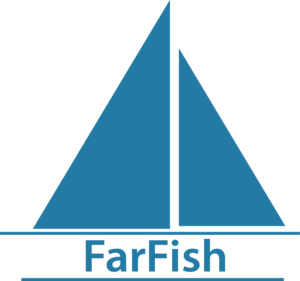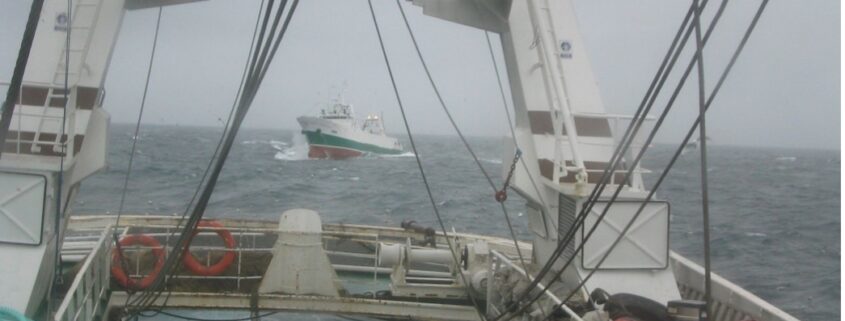Pan-Arctic Marine Protected Area Network – a solution for anthropogenic threat in the Arctic
FarFish essay series
FarFish developed and ran a one-week University-level certificate course in Marine Management and Innovation in the spring of 2020. Over thirty participants attended the course and eight students completed the certificate programme by submitting a thesis on FarFish relevant issues. We have been publishing summary of these essays here at the FarFish webpage, and now we present the work of Diago Rocha Marques from Portugal, on Marine Protected area Network in the Arctic.
The Arctic and its ecosystems make up a unique region that hosts a tremendous range of wildlife, including commercially valuable marine species. It is also the home for many indigenous people that largely depend on the animal resources of the Arctic. For most of modern civilization history, this remote area has been relatively inaccessible due to geographic and climatic circumstances, but technological advancements and climate change has greatly changed this scenario. Today, only the northernmost parts of the Arctic remain inaccessible where the sea ice is still a physical barrier hindering commercial and military exploitation. However, it is plausible that the entire region will become exploitable as ice is retreating at an alarming rate due to global warming. Additionally, increasing demand for ocean resources, changes in numbers and populations of wildlife species, over-harvesting, increases in permanent inhabitants, and bloating tourism are other forces influencing the dramatic changes in the Arctic
Due to the abovementioned circumstances, the Arctic is receiving unprecedented international attention. Whereas the scientific community is trying to understand how increasing temperatures will affect the Arctic Ocean and its delicate ecosystems, world leaders are competing to gain control over the newly accessible waters. Currently, the Polar nations and some countries with no Arctic boarders (e.g. China) are angling for access to the Arctic’s natural and mineral resources, as well as establishing marine operations (e.g. shipping).
The Arctic consists of many individual marine protected areas (MPAs) where the management approach varies depending on the governing nation. Overall, they all attempt to govern environmental interests mainly, but also social and economic ones. The MPAs acts as management tools in a region with many diplomatic disputes. However, they also tend to be the common source of disagreement between stakeholders due to the multidimensional complexity of the Arctic region. This complexity comes from different national strategies, several exclusive economic zones and high sea areas, as well as vulnerable and unique ecosystems. This is why the Arctic MPAs should not be managed individually, but rather together in a MPA network through international cooperation. Such a network and cooperation would strengthen marine ecosystem resilience, and contribute to preserve the cultural and historical heritage of the indigenous communities, as well as developing the industrial sector in a sustainable way.
Due to the great area of the circumpolar region, such a complex network is fundamental to maintain ecosystem processes and connectivity, including food webs, migratory routes, along with improving resilience by facilitating actions concerning climate change and environmental hazards which may come from oil spill, diseases, and invasive species. Other potential benefits relate to protection of natural ecological values, such as habitats which host bottom tropic level species and IUCN red-listed species, securing exclusive nursing, spawning and feeding spots, and protection of normal abiotic values, for example filtration of Persistent Organic Pollutants. Furthermore, such a multidimensional network would also bring many socio-economic and cultural benefits that can be related to heritage values, educational values, scientific values and managerial values.
For a coherent implementation of a pan-Arctic MPAs network, the development and implementation of each Arctic MPA should be guided by some transversal principles. There should exist a transparent and open process and a coherent and systematic approach to guarantee that networks are linked to ecosystem-based management (EBM) efforts independently in the broader seascape – across EEZ boundaries – in the high seas. The government authorities’ rights and provisions of applicable agreements and treaties should be respected, including the United Nations Declaration on the Rights of Indigenous Peoples. All the different legitimate sources of knowledge, including scientific, cultural, indigenous, and industry knowledge, should be used for the development of more conscious policies. During the framework designing, there should exist integrated efforts across institutions as well as appropriate protection measures to guarantee that the projected level of protection is fitting to help achieve the goals and objectives for singular MPAs and the pan-Arctic network. Finally, the planning, development and implementation of each Arctic MPA should make use of dynamic evaluation and refinement of management practices. Ultimately, the pan-Arctic network can contribute as a higher-level conservation tool and increase efficiency of EBM in the Arctic area.
Diogo Rocha Marques, a participant of the FarFish course Marine Management and innovation originally wrote the essay summarized here.




